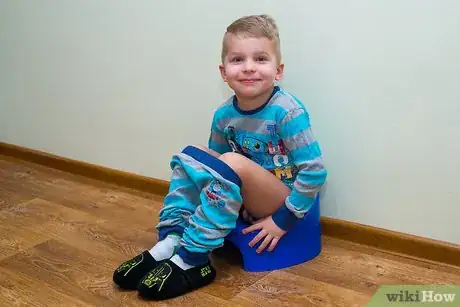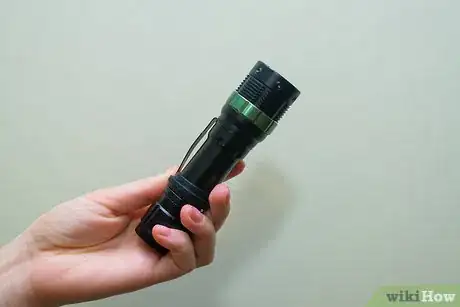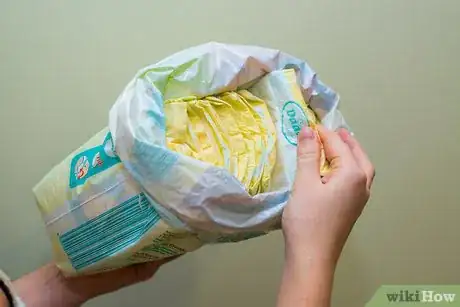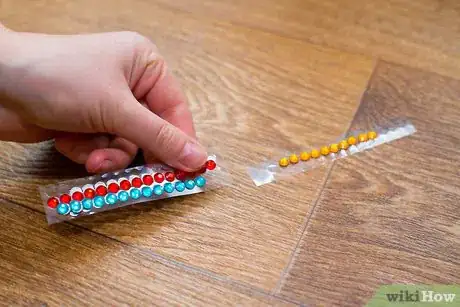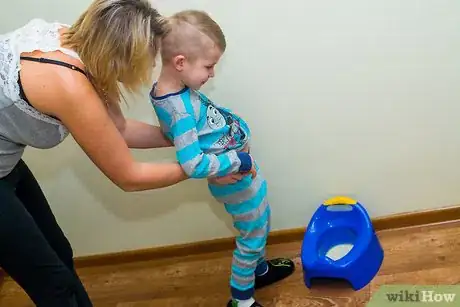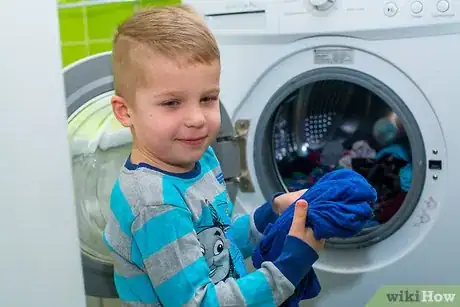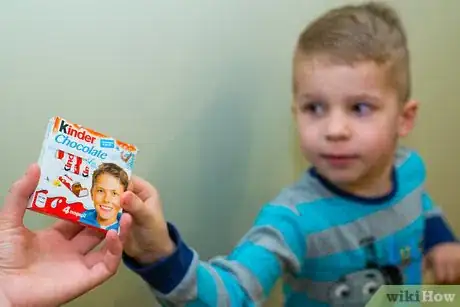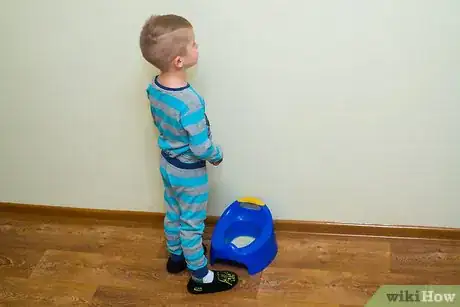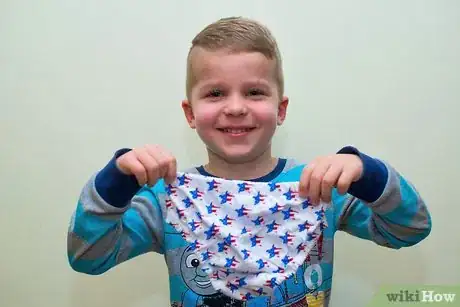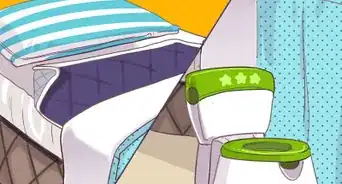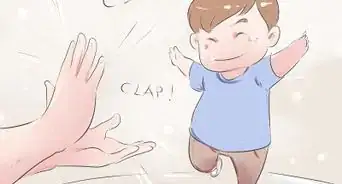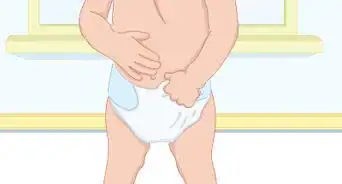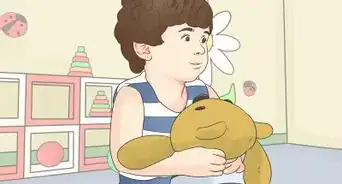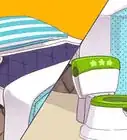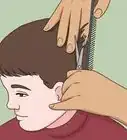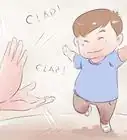X
This article was co-authored by Sylvia Rath. Sylvia Rath is a Parenting Specialist and the Director of Little Village Nursery School in Los Angeles, California. With over 30 years of experience, Sylvia guides parents through the preschool years and beyond by teaching respectful communication and positive discipline methods. Sylvia holds a BA in Psychology and Early Child Development from Antioch University. Before working at Little Village Nursery School, she taught preschool for eight years.
This article has been viewed 37,450 times.
Did you just potty train your child during the daytime, and now are wondering how to potty train them during the night? This article can explain to you the process.
Steps
Method 1
Method 1 of 2:
Part One: Preparing Your Child
-
1Allow the child to potty train during the day first. Do this well before potty training at night. Potty training at night is a more complicated process for your child to achieve successfully. If you'd like, for the time being, you may end up having them wear diapers (or sometimes called nappies) during the night while potty training them during the day.[1]
-
2Prepare a flashlight with good batteries. Put it near their bed in case they need night some extra lighting. Alternatively, you can leave a hallway or bathroom light on to help them out. You don't want a fear of the dark to keep them from success.[2]
- Glow sticks can be gaudy, and don't last for too many nights. Therefore, save your cash and don't buy them for use. (Yes, you can save them in the refrigerator, but with a glow stick's life cycle, but doing so is unnecessary.)
Advertisement
Method 2
Method 2 of 2:
Part Two: Potty Training at Night
-
1Prepare your child for night time toilet-training. With the idea that some children find toilet training at night is tougher to achieve, the child may overreact and have accidents, during the day. For a few days, during night time training, prepare your child a few disposable potty-training pants for daytime use.[3]
-
2Use disposable bedwetting diaper on your child during the nights you choose to begin the nighttime potty training process. Such brands include Goodnites (or DryNites in Europe) or one of the many store-brand disposable bedwetting diapers. These will help for both the parents (from extra wetting the floor) as well as giving the child the feeling they want (wicking away moisture), should the child have an accident while trying to walk to the bathroom in time during the night.[4]
-
3Prepare the floor with glowing stickers or stars. Have the child help with preparing these stickers - the fun part is the art of preparation! Line them up in the direction you want the child to walk at night, and explain that these stickers help guide your child's way.
- Make sure that the glowing stickers have had some light exposed to them at first before the child begins to fall asleep. If you can, use an always-on nightlight near these glowing stickers to ensure they will stay glowing when they are most needed each night.
-
4Prepare the child. Explain to them that now that they know the process during the day, they just have to work on it at night. Reassure them that some mistakes are okay, and that they shouldn't be worried. Focus on what a grown-up step it is to use the toilet, and get them excited about the idea of getting to wear fun new underwear once they can stay dry.[5]
- Explain also to them that you will be there to help, as needed. If they're old enough and want to, they can take care of their bathroom needs by themselves at night, but also reassure them that you're available for help if they need it.
-
5Dress them in easy-to-remove clothes. Pick pajamas that can be removed quickly and easily on those nights.[6]
- Even a onesie can be considered an easy-to-remove piece of clothing, once the child realizes where the snaps are that hold the clothing shut.
- Or have them sleep in only their diaper to make it easy for them.
-
6Be available for help. Listen out to what's going on during the night. If you hear the child going to the bathroom alone, that's great! If they have an accident or are distressed about the process, provide them with the support they need. The transition isn't always easy, and it helps to be supportive and understanding, especially for young children who are younger than three or four.[7]
- For a little peace of mind, provide a baby monitor in both the child's bedroom (the transponder) as well as in the bedroom where you sleep (the receiver) , to make sure you don't "skip a beat!"
-
7Deal with accidents. These will happen! Have your child help, at an age-appropriate level, in doing a little cleaning up afterwards. This isn't a punishment and shouldn't be arduous. You can do any of the messier stuff, but consider having your child change their own clothes and put the soiled clothes in the laundry hamper, or throw away the night-time diapers they might have soiled that night. That way, they are exposed to some natural consequences of having accidents, which will reinforce the benefits of staying dry.[8]
-
8Offer praise. Reinforce their success! Get excited with them when they stay dry overnight - make it fun![9]
- If your child is really struggling with motivation when it comes to potty-training, you might consider a reinforcement schedule. Provide a sticker for each dry night, and let them know that once they have three or four stickers, they can pick out a little toy or get a fun trip to the playground. Match the reward to your child's wants and needs, and make it something fun.
-
9Repeat this process for several nights over a few weeks time. If they're doing well, remove the daytime potty-training pants after a period of about two weeks, and remove the nighttime bedwetting diapers/pants after a period of three weeks of success.[10]
- Always remove the bedwetting diaper once the morning arises. You may feel safe enough to use regular underwear on your little ones, but sometimes nighttime training may cause daytime accidents for a few days. Use a pair of potty-training pants in the daytime, such as Pull-Ups or the store brand variety, if needed.
-
10
Advertisement
Community Q&A
-
QuestionWhat if the boy is over 7 years old and still having nighttime wetting problems?
 Community AnswerHave him pee before bed and don't give him any more water starting an hour before bed time.
Community AnswerHave him pee before bed and don't give him any more water starting an hour before bed time. -
QuestionHow often should I wake my child up at night to go wee?
 Community AnswerWe always left a little kiddie potty, if the bathroom is too far from their room. In the early days, we woke them up when we went to bed. It meant sleepy kids, but no accidents. When they were sleeping through the rest of the night no problem, we just made sure they peed before bed. And they are allowed to get up to go pee any time (and we leave nightlights along the path, to accommodate that).
Community AnswerWe always left a little kiddie potty, if the bathroom is too far from their room. In the early days, we woke them up when we went to bed. It meant sleepy kids, but no accidents. When they were sleeping through the rest of the night no problem, we just made sure they peed before bed. And they are allowed to get up to go pee any time (and we leave nightlights along the path, to accommodate that). -
QuestionWhat if they poop in the nighttime diaper?
 Aubrey Davis-StudentCommunity AnswerHave them stop eating and drinking an hour or 30 minutes before bedtime. Before bed, have them try really hard to go to the bathroom. If they had no accident in the night, put a cotton ball in a jar. (Take a cotton ball out when he/she has an accident in the night.) When the jar is full, assuming that you continued this every night, he/she gets a prize.
Aubrey Davis-StudentCommunity AnswerHave them stop eating and drinking an hour or 30 minutes before bedtime. Before bed, have them try really hard to go to the bathroom. If they had no accident in the night, put a cotton ball in a jar. (Take a cotton ball out when he/she has an accident in the night.) When the jar is full, assuming that you continued this every night, he/she gets a prize.
Advertisement
Warnings
- If the child can't successfully complete potty-training at night (or is still having nighttime accidents during potty training) before they turn 7 or 8 years old, seek medical advice. It may be a medical case that only a doctor can handle.⧼thumbs_response⧽
- Although it may seem like a good thing for your child to sleep in, a blanket sleeper isn't the best choice, unless the blanket sleeper can zip down completely to the child's ankle(s). For quick and easy removal, provide the child with clothes that feature a Velcro closures, or other easily manipulated fasteners so the child will be able to get out of it quickly and without help.⧼thumbs_response⧽
Advertisement
Things You'll Need
- Pull ups daytime potty-training pants
- Bedwetting diapers
- Pants
- Glow lights (optional)
References
- ↑ https://pediatrics.aappublications.org/content/103/Supplement_3/1362
- ↑ https://www.kidney.org/patients/bw/BWalarm
- ↑ https://www.whattoexpect.com/toddler/behavior/bed-wetting.aspx
- ↑ https://www.whattoexpect.com/toddler/behavior/bed-wetting.aspx
- ↑ https://www.nct.org.uk/baby-toddler/potty-training/top-tips-for-night-time-potty-training-success
- ↑ https://raisingchildren.net.au/preschoolers/health-daily-care/toileting/toilet-training-guide
- ↑ https://raisingchildren.net.au/preschoolers/health-daily-care/toileting/toilet-training-guide
- ↑ https://www.nct.org.uk/baby-toddler/potty-training/top-tips-for-night-time-potty-training-success
- ↑ https://raisingchildren.net.au/preschoolers/health-daily-care/toileting/toilet-training-guide
About This Article
Advertisement
